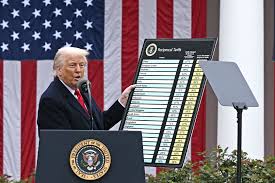Net migration to UK fell 10% last year, ONS says

London: Net migration to the UK fell 10% last year after hitting a record high in 2022, official figures show.
The number – the difference between the number of people arriving in the UK and leaving – was 685,000 in the year to December 2023, says the Office for National Statistics (ONS).
This represents a fall from 764,000 for the year to December 2022 – a figure revised upwards by 19,000 from an initial estimate now more complete data for the year is available.
The ONS said it is “too early to say if this is the start of a new downward trend”.
The Migration Observatory at the University of Oxford said net migration “remained at unusually high levels”.
Migration: How many people come to the UK and are the visa rules changing?
The figures come a day after Prime Minister Rishi Sunak called a general election for 4 July, in which immigration is likely to be a key battleground issue.
Despite the fall, net migration is more than three times higher than at the 2019 election when the Conservatives promised to cut overall numbers in their manifesto.
Home Secretary James Cleverly said the drop in net migration, as well as visa applications being down 25% so far in 2024, shows Mr Sunak’s plan was working but “there is more to do”.
The Home Office said the net migration figures “do not take into account the major package of measures announced in December which have already started to have an effect”.
These rules, which took effect last month, included increasing the minimum salary needed for skilled overseas workers.
When they were announced in December last year, Mr Cleverly claimed 300,000 people who were eligible to come to the UK in 2023 would no longer be able to in future.
Yvette Cooper, the shadow home secretary, said Labour would pledge to link a points-based immigration system with plans to boost skills at home.
She said the latest figures show “total Tory chaos and failure on immigration as net migration has more than trebled since Rishi Sunak and his party promised to get it down at the last election”.
The ONS figures show the number of people coming to the UK for humanitarian reasons – such as from Ukraine and Hong Kong – fell by more than 100,000 last year.
The data estimates about 1.22 million people came to the UK in 2023, and some 532,000 likely departed. The total arrivals is only slightly lower than the 1.26 million in 2022.
The biggest driver of migration last year was work. There was also an increase in the number of people arriving from outside the European Union on work visas, the figures suggest.
Non-EU immigration for work reasons went up from 277,000 in the year to December 2022 to 423,000 in the year to December 2023, according to the ONS.
More than four out of 10 people moving to the UK for work-related reasons last year came from India or Nigeria, most commonly in the health and social care sector.
Despite this, data from the Home Office published on Wednesday showed a big fall in visas issued to health and care workers in the first part of 2024 but that is not included in the ONS estimates.
Non-EU nationals arriving as dependants of those on long-term work visas rose slightly in 2023 to 219,000 from 204,000 in 2022.
The ONS says the fall in net migration is also driven by non-EU foreign students who flocked to UK universities after Covid but have now finished their courses and returned home.
This is the last complete set of immigration figures before the election which means Home Office measures to restrict work and students’ dependents visas will not be reflected in net migration statistics before polling day.
Work-related non-EU immigration was at record levels last year, with fewer visas being issued by the government to workers than the family members they brought with them.





